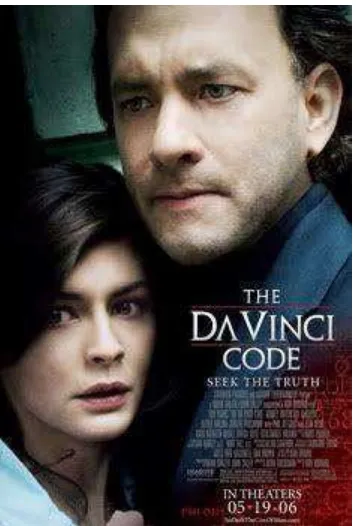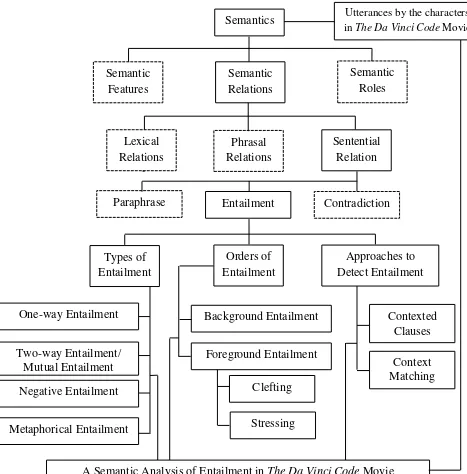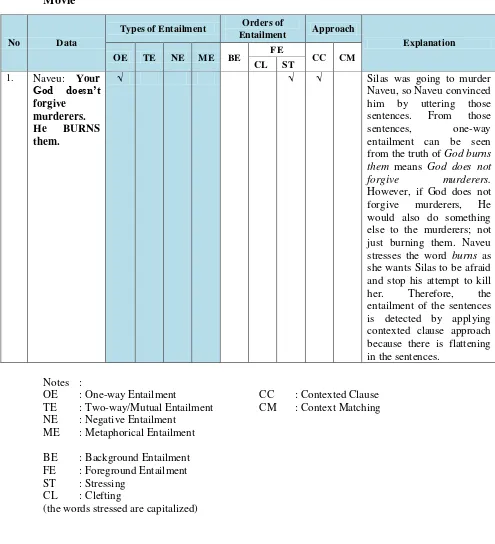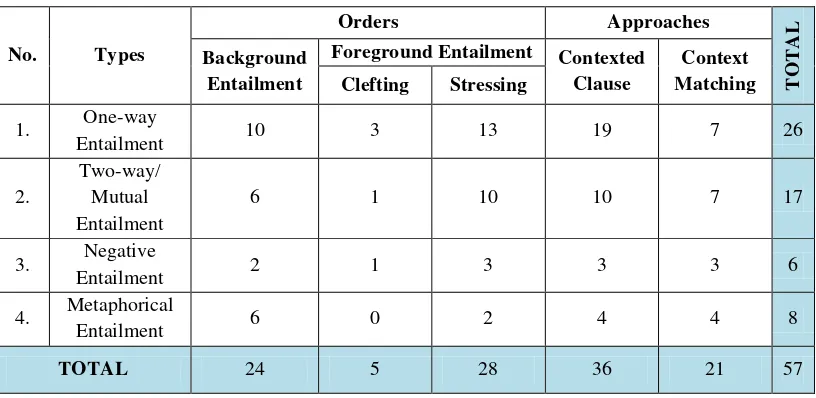Informasi Dokumen
- Penulis:
- Yesi Rahmawati
- Pengajar:
- Titik Sudartinah, S.S., M.A.
- Ari Nurhayati, M. Hum.
- Sekolah: Yogyakarta State University
- Mata Pelajaran: English Literature
- Topik: A Semantic Analysis of Entailment in The Da Vinci Code Movie
- Tipe: thesis
- Tahun: 2017
- Kota: Yogyakarta
Ringkasan Dokumen
I. INTRODUCTION
The introduction sets the stage for the study by discussing the importance of semantics in understanding communication. It emphasizes how language acts as a medium for conveying meaning and how the study of entailment provides insights into the logical relationships between sentences. The background outlines the relevance of analyzing the film 'The Da Vinci Code' as it contains rich examples of entailment, which can enhance comprehension of linguistic phenomena. The research focus narrows down to the specific types and orders of entailment present in the film, while the objectives highlight the intent to identify, describe, and explain these elements. The significance of the study is articulated, pointing to its potential contributions to students, researchers, and educators in the field of linguistics and semantics.
II. LITERATURE REVIEW AND CONCEPTUAL FRAMEWORK
This section reviews key concepts in semantics, particularly focusing on entailment. It discusses the definitions and distinctions between semantics, pragmatics, and various semantic relations. The literature review covers types of entailment, including one-way, two-way, negative, and metaphorical entailments, along with their significance in semantic analysis. The conceptual framework illustrates how these theories are applied to the analysis of 'The Da Vinci Code', establishing a foundation for understanding the linguistic mechanisms at play in the film's dialogues. This framework is crucial for students and researchers aiming to grasp the complexities of semantic entailment in cinematic texts.
2.1 Semantics
Semantics is defined as the study of meaning in language, focusing on how words and sentences convey meaning. This subsection emphasizes the systematic nature of semantics and its differentiation from pragmatics, which deals with meaning in context. Understanding semantics is essential for analyzing entailment, as it provides the necessary tools to dissect how meaning is constructed and interpreted in language.
2.2 Types of Entailment
This subsection categorizes entailment into various types, including one-way and two-way entailments, and discusses their implications for understanding language. It highlights how each type of entailment contributes to the overall meaning derived from sentences, thereby enriching the analysis of dialogues in 'The Da Vinci Code'. Recognizing these types is fundamental for students learning about semantic relationships.
2.3 Orders of Entailment
Orders of entailment are discussed in terms of background and foreground entailments. This subsection explains how sentences can imply multiple entailments, which can be categorized based on their relevance to the main point of discussion. Understanding these orders is vital for learners to appreciate how context influences meaning and how this is reflected in cinematic narratives.
2.4 Approaches to Detect Entailment
This subsection outlines methodologies for detecting entailment, focusing on contexted clauses and context matching. These approaches are essential for analyzing the dialogues in 'The Da Vinci Code', allowing researchers to identify how entailment operates within the film's narrative. This knowledge is particularly beneficial for students aiming to apply theoretical concepts to practical examples.
III. FINDINGS AND DISCUSSION
In this section, the findings from the analysis of 'The Da Vinci Code' are presented, detailing the types and orders of entailment identified in the film. The discussion interprets these findings in the context of the theoretical framework established earlier, providing insights into how the characters' dialogues exemplify various semantic relationships. This analysis not only reinforces the theoretical concepts but also demonstrates their application in real-world texts, thus enhancing the pedagogical value of the study for students and educators alike.
3.1 Types of Entailment in The Da Vinci Code Movie
This subsection elaborates on the specific types of entailment found in the film, providing examples and discussing their frequency. The identification of one-way, two-way, and negative entailments illustrates the complexity of the characters' dialogues, showcasing how these linguistic elements contribute to the narrative's depth. This analysis is crucial for students to understand the practical implications of semantic theory.
3.2 Orders of Entailment in The Da Vinci Code Movie
Here, the focus shifts to the orders of entailment, discussing how background and foreground entailments manifest in the film. The analysis highlights the interplay between context and meaning, illustrating how different orders of entailment can influence audience interpretation. This understanding is vital for learners as it emphasizes the importance of context in semantic analysis.
3.3 Approaches to Detect Entailment in The Da Vinci Code Movie
This subsection reviews the practical application of the approaches to detect entailment within the film's dialogues. By demonstrating how contexted clauses and context matching can be utilized, this analysis equips students with the tools necessary to conduct their own semantic analyses, fostering critical thinking and analytical skills.
IV. CONCLUSIONS AND SUGGESTIONS
The concluding section summarizes the key findings of the research, reiterating the significance of understanding entailment within the context of 'The Da Vinci Code'. It emphasizes the contributions of the study to the field of semantics and suggests areas for future research, encouraging further exploration of semantic phenomena in various media. This section serves as a reflective summary for students and researchers, reinforcing the relevance of the study to their academic pursuits.
4.1 Conclusions
The conclusions drawn from the research highlight the richness of entailment in cinematic dialogues, underscoring its importance in semantic analysis. This summary provides a clear takeaway for students regarding the practical applications of theoretical concepts.
4.2 Suggestions
This subsection offers suggestions for future research, encouraging students to explore other films or texts for similar analyses. It emphasizes the need for continued exploration of semantic relationships in various contexts, fostering a deeper understanding of language use in communication.



